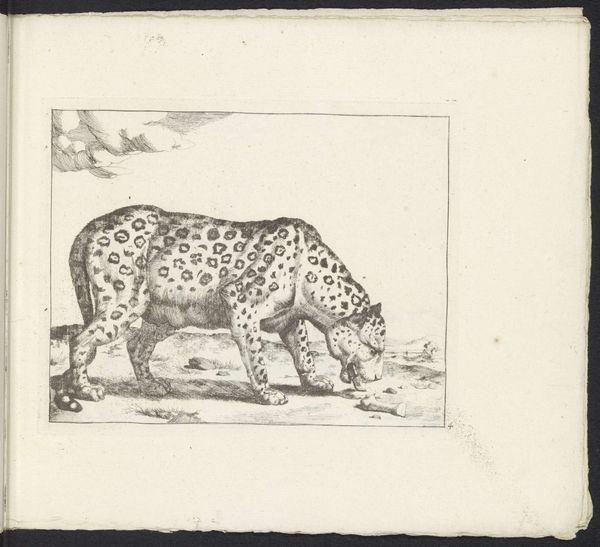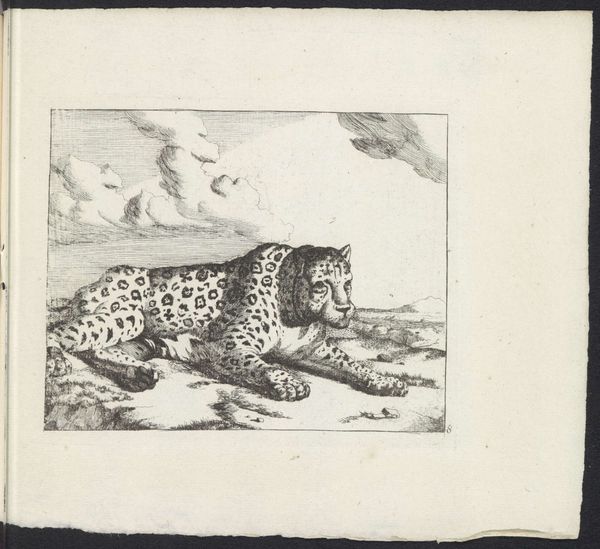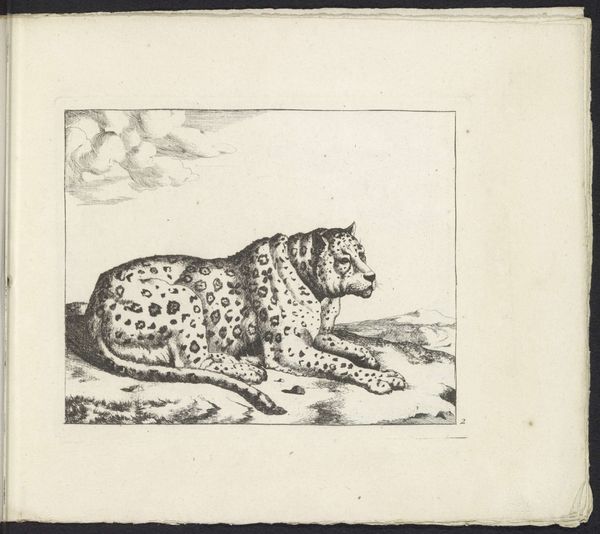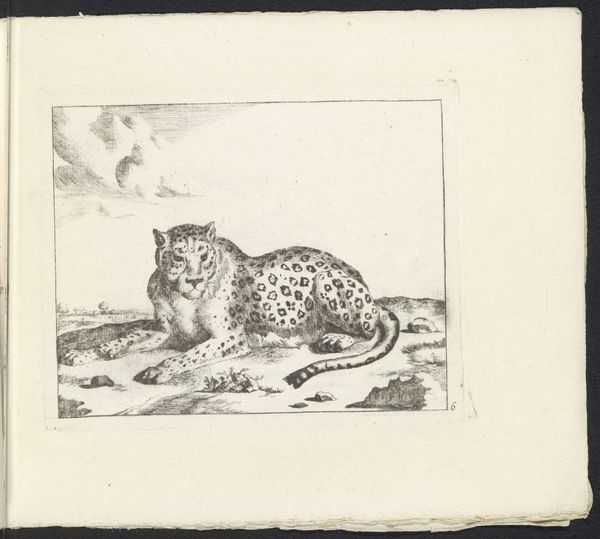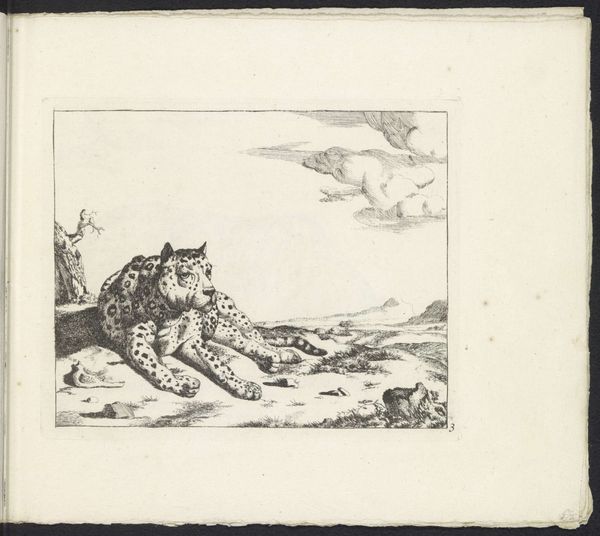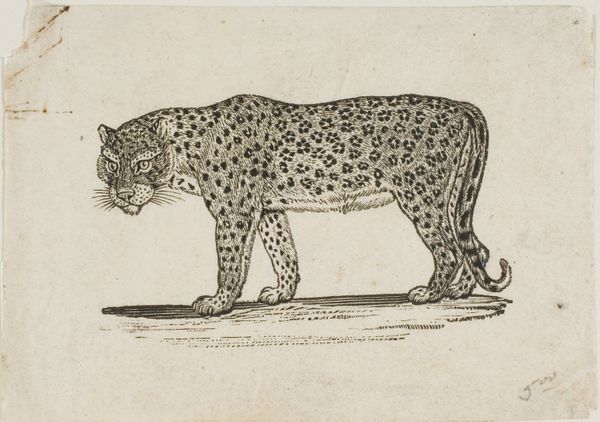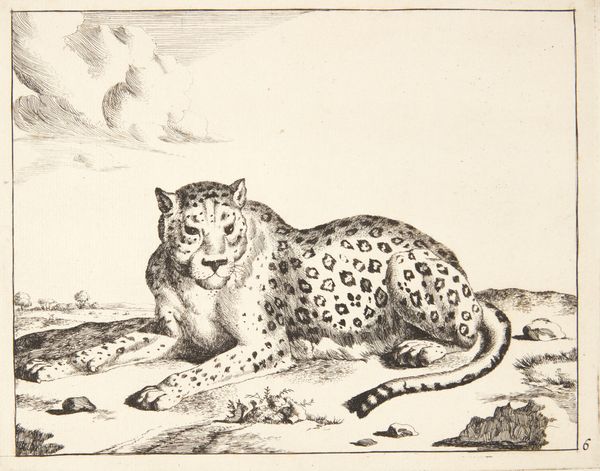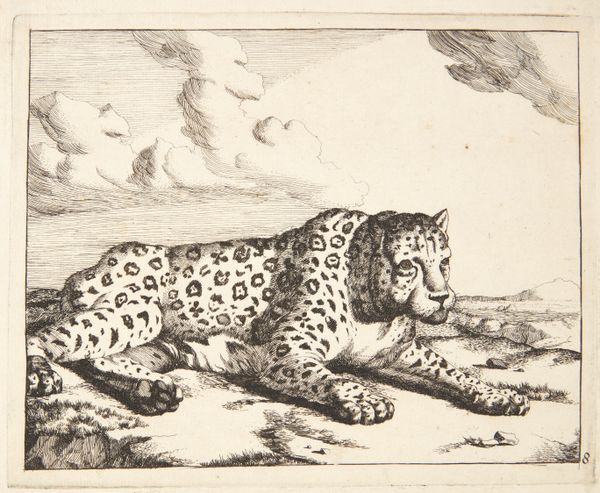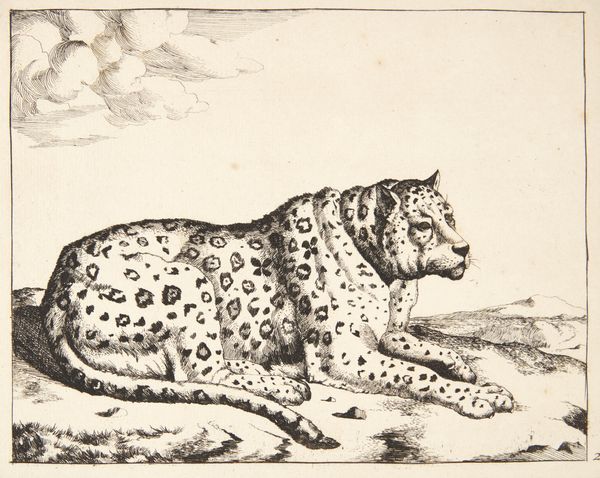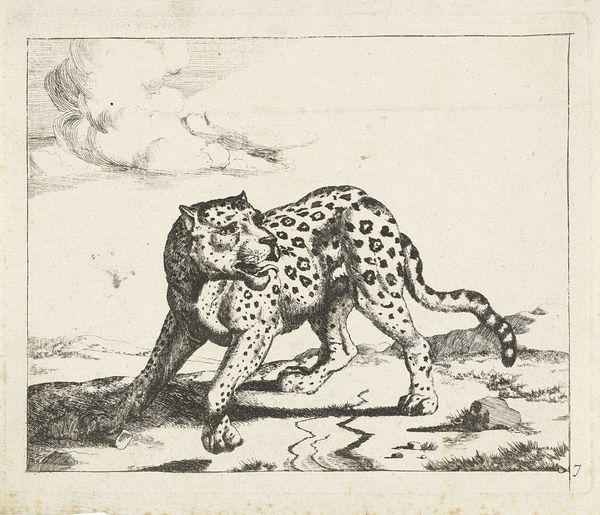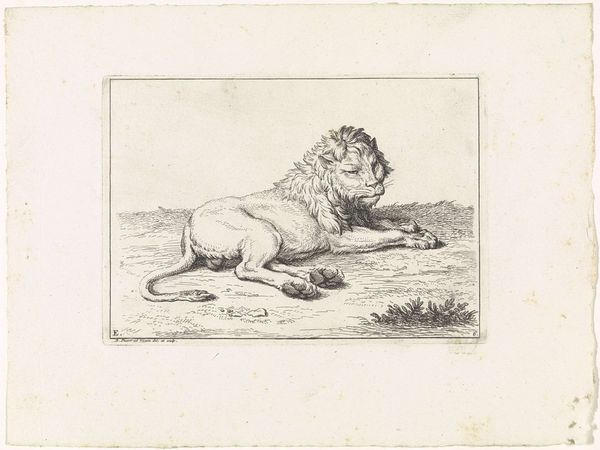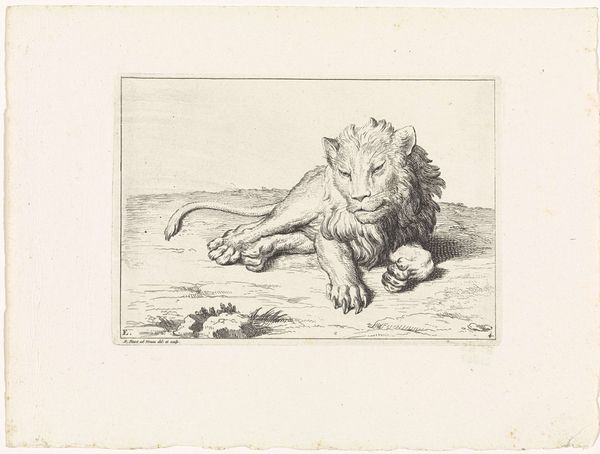
drawing, ink, engraving
#
drawing
#
baroque
#
pen drawing
#
animal
#
pen sketch
#
landscape
#
figuration
#
11_renaissance
#
ink
#
engraving
Dimensions: height 140 mm, width 173 mm, height 210 mm, width 270 mm
Copyright: Rijks Museum: Open Domain
Curator: Welcome. Before us, we have a pen and ink drawing titled "Luipaard zittend op achterpoten, naar links" or "Leopard Sitting on its Hind Legs, Facing Left," attributed to Marcus de Bye, created sometime between 1657 and 1677. Editor: My initial thought? A regal but weary figure. The animal is powerfully built, but there's also an undeniable stillness and almost a sadness in its posture. It suggests captivity to me, a captured majesty. Curator: An intriguing observation. Consider that this image, crafted using pen and ink, likely existed within a larger production system. Prints, drawings, often served as models, informing other artworks, playing a role in circulating imagery of exotic animals at the time. Editor: Yes, and that circulation carries immense weight. Leopards, as symbols, have been loaded with meaning across cultures and time—power, ferocity, but also guardianship and even healing. The direction it faces, left, often considered the past...is it looking back at its lost freedom, maybe? Curator: The landscape surrounding the leopard, sparsely rendered though it is, indicates something about the animal’s relationship to its environment. Is it a depiction of the Dutch landscape or is de Bye perhaps referring to the original habitat? That’s another thing to consider when analyzing such a representation. How does the setting inform our reading of the animal's symbolic meaning? Editor: Good point. This image speaks volumes about the European perception and perhaps exploitation of the natural world during that period. Curator: Exactly. The technique used – delicate pen strokes to create depth, shadow and texture - showcases not only artistic skill, but also contributes to the overall presentation. The process reflects an interest in, shall we say, “possessing” nature, through depiction, cataloging and display. Editor: Ultimately, beyond the historical context, this remains a potent image. Its starkness invites us to project our own feelings onto the animal and the symbolism that still lingers. Curator: I agree. Viewing through a contemporary lens also sheds light on the materials and methods employed to not only construct meaning, but also examine a cultural dialogue between man and animal that continues to shape us today.
Comments
No comments
Be the first to comment and join the conversation on the ultimate creative platform.
